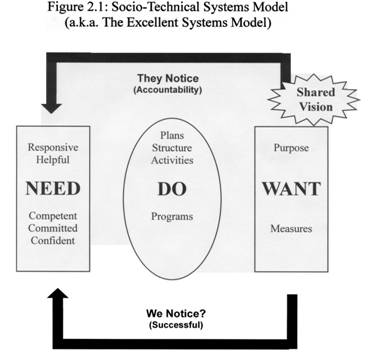The Planning Process:
“We don’t have time for strategic planning. The day-to-day work of the agency consumes all of our time, energy, and resources.”
· Strategic planning certainly does take time, energy, and resources.
· Strategic planning certainly does, in the short run, take the required time, energy, and resources away from the immediate work of the agency.
· Without strategic planning, though, most agencies will simply persist in doing what they have always done, the way they have always done it.
Imagine yourself a worker at the beginning of an automobile assembly line. Your job is to affix five bolts on a piece of metal. Also assume that you have no idea that at the end of the assembly line, an automobile will emerge. Further, assume that, even if you did hear rumors about automobiles, you knew nothing about the greater vision: providing safe, convenient transportation for individuals and families. What a boring, tedious job you would have!
 All planning work begins in the “Want” box. A strategic vision is crafted that sets forth what stakeholders want for children, families, and the community ten years from now. Next, the purpose (the agency mission or unique contribution to the vision) is crafted. This purpose sets forth the agency’s reason for existence.
All planning work begins in the “Want” box. A strategic vision is crafted that sets forth what stakeholders want for children, families, and the community ten years from now. Next, the purpose (the agency mission or unique contribution to the vision) is crafted. This purpose sets forth the agency’s reason for existence.
Next, you develop the shared measures that set forth the benchmark by which you will measure your progress for transforming the current system to the desired system. You have developed the compass for where the agency is going.
Now, move to the “Do” Box. All current plans, activities, policies, and procedures are analyzed to ensure consistency with the agency’s vision and purpose (mission). Those that are consistent stay. Those that are not are modified so they are consistent. The same process applies to all future plans, activities, policies, procedures, and decisions. The vision and mission are, of course, the touchstone for all of these.
Now, move to the “Need” Box. How will you allocate scarce financial and human resources? What new resources must you develop? What types of staff do you need and how should they be trained to accomplish the vision and mission?
The Feedback Loops provide the mechanisms to assess how the agency is doing with the transformation. You have engaged external stakeholders in the development of the plan. You have clearly communicated where the agency is going and the benchmark you are using to mark progress.
As the agency makes progress, you carefully keep external stakeholders informed. The agency’s perceived accountability increases.
Keeping stakeholders informed provides illustrations of success to the staff who are leading the change. They see their achievements and their success becomes contagious. [23]
Applying the Excellent Systems Model to this example, affixing the bolts represents “the job,” while producing a high quality automobile represents the “mission” for the assembly line. Of course, safe, convenient transportation for individuals and families is the vision that drives the effort. The assembly line contributes to achieving the vision but cannot do it by itself. Good roads and adequate fuel supplies, among other things, are also needed.
Now, think back on your life experiences. How many times have you seen visionary leaders who actually accomplish very little? They have wonderful ideas, access to adequate resources, intense passion for their causes, and are in positions to realize their visions. Still, they fail. These failures are typically due to their inability to develop the structures and organizations needed to successfully do the work required to realize their visions.
To succeed, a visionary agency must, of course, attend carefully to its vision. Concurrently, equal attention must also be given to thoughtfully developing and maintaining the required structure and organization. The approach described below systematically develops a vision driven, strategic plan which has community-wide support. Additionally, the resulting plan is mission focused, develops the required structure and organization, and prioritizes the necessary work to transform the agency into a center of excellence.



